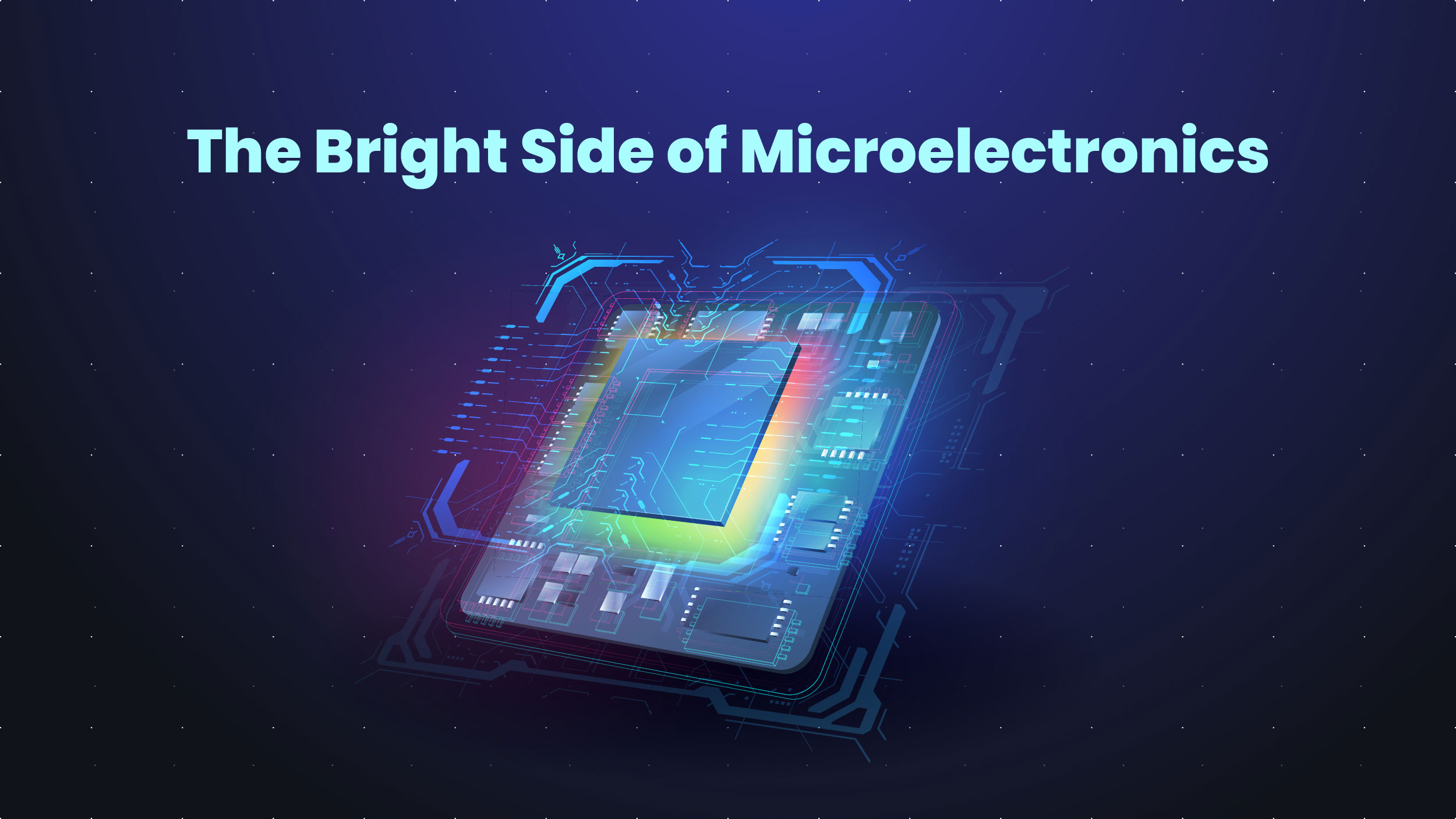Have you ever been astounded by the strength and sophistication crammed into a hand-sized device like your smartphone? Or perhaps you’ve wondered about the complex medical equipment that enables doctors to diagnose diseases with incredible precision. The field of microelectronics, a branch of technology that has revolutionized our way of life and miniaturized our gadgets, holds the key to these wonders.
As you read on in this blog, a world of knowledge awaits you about microelectronics technology – its benefits, practical applications, and a wealth of information. Let’s get started!
What is Microelectronics and How Does It Differ from Traditional Electronics?
The design and manufacture of small electronic devices, such as microprocessors, utilizing methods like photolithography, is the focus of the electronics engineering field known as microelectronics.
Using semiconductor materials, like silicon, to create the required small structures and devices is an essential aspect of this field. The ability of semiconductor materials to conduct electricity under specific conditions makes them valuable for a variety of electronic applications.
Having gained an understanding of the term, you might be curious about its distinctions from traditional electronics. To clarify, it primarily centers on crafting small electronic devices, whereas traditional electronics encompasses a broader spectrum of subjects concerning the study and utilization of electronic components.
The Bright Side of Microelectronics

Microelectronics offer awesome advantages for almost every part of our modern lives, making things more convenient, efficient, and ripe for new ideas. Let’s discuss some of these:
- Miniaturization: Through the use of this advanced technology, it is possible to design devices that are more efficient, lighter, and smaller.
- Increased Performance: Microelectronic devices can give high levels of performance, processing power, and speed, despite their small size.
- Energy Efficiency: Batteries boast of extended lifespans and improved energy efficiency due to their design that supports minimal power consumption.
- Cost Reduction: Advancements in technology have reduced the cost of production, increasing the availability and affordability of technology.
- Innovative Applications: Microelectronics have novel applications in a variety of industries, including healthcare, communication, transportation, and more.
- Integrated Systems: By enabling the integration of multiple functions onto a single chip, this technology facilitates the creation of more efficient and streamlined systems.
- Real-time Data Processing: Data analytics, artificial intelligence, and machine learning are supported by microelectronic devices, which can process and analyze data in real-time.
- Improved Connectivity: Through wireless communication technologies, it enables seamless connectivity, allowing devices to communicate and exchange information with ease.
- Advanced Sensing: Various environmental elements can be detected and measured by microelectronic sensors, which help improve monitoring and control in sectors, including automotive, aerospace, and healthcare.
- Scientific Advancements: Advanced electronics enable accurate measurements, data collection, and simulations in disciplines like physics, chemistry, and biology, which are vital for scientific study.
Microelectronics Circuits: Why They Matter
Microelectronic circuits have the advantage of being able to put an enormous number of parts and functions into a limited space, which enables the development of extremely efficient and compact devices. Furthermore, because of the shorter lengths that electrical impulses must travel, microelectronic circuits can run at fast rates.
Microelectronic circuit design and manufacture, however, can be difficult due to their small size and the requirement for precise positioning and connectivity of numerous components. In addition to the creation of novel materials and fabrication processes, this calls for the utilization of sophisticated computer simulations and testing methodologies.
Microelectronics in Action: Industry Applications

The influence of this technological marvel is evident across diverse industries, significantly altering our daily routines and professional pursuits. Here’s a rundown of a few of them.
- Consumer Electronics: Compact dimensions, distinctive attributes, and rapid functionality characterize contemporary devices such as smartphones, tablets, laptops, and wearables, all thanks to this advanced technology.
- Healthcare: Medical equipment relies heavily on electronics, from pacemakers, which control heartbeats, to cutting-edge imaging systems, which facilitate diagnosis and treatment.
- Communications: Microelectronics are the driving force behind satellite communication, 5G networks, and high-speed internet, allowing for seamless global connectivity.
- Automotive: Vehicle performance, efficiency, and safety are all improved by cutting-edge electronics. They are the heart of contemporary automobiles, powering everything from complex driver-aid systems to engine control modules.
- Aerospace: Essential for compact design and dependable performance, they contribute to satellites, space probes, and rovers’ operations in the challenging space environment.
- Energy Management: The advancement in technology enables the creation of smart grids, energy-efficient appliances, and renewable energy systems, all playing a role in shaping a greener future.
Microelectronics Renewed: Thriving in the 21st Century
Microelectronic devices play a crucial role in countless aspects of our lives, impacting businesses, economies, healthcare, crisis response, energy distribution, and national security. Although they’ve swiftly advanced in size, cost, and capabilities since the mid-20th century, current challenges are beckoning us toward a fresh phase of innovation.
To upgrade this technology, the U.S. Department of Energy’s Office of Science and national laboratories collaborate closely with industry stakeholders. Particle detectors, sophisticated microscopes, X-ray/neutron sources, data centers, networks, and high-performance computers are just a few of the user facilities that the Office of Science is responsible for managing and making available to the scientific community.
A microelectronics program is being launched to promote innovation with the goal of enhancing supercomputing, exploring novel materials, advancing advanced computing architectures, and promoting scientific research, energy efficiency, and national security. In light of the limitations associated with traditional Moore’s law, research focuses on atomic-scale materials and cutting-edge computing paradigms like neuromorphic and quantum computing. These developments will change the way we compute and will be advantageous for quantum information science and AI.
Additionally, it offers the key to more advanced research capacities and eco-friendly energy systems. Advancements are fueled by a collaborative “co-design” strategy that brings experts from across the pipeline together. In the end, national laboratories’ microelectronics programs close the gap between discovery science and real-world application, assuring the technology’s continued relevance and significance.
Bringing it Together
Advanced technology continues to be a major influence on how our world is shaped in a time of perpetual invention. Their influence is undeniable, having a positive impact on everything from consumer electronics to scientific breakthroughs. Microelectronics technology has revolutionized industries worldwide. From microelectronics manufacturing to its applications across various sectors, this dynamic field continues to drive innovation, reshaping the microelectronics industry and beyond.
The future seems to hold even more ground-breaking applications that would restructure industries and change the way we view technology, as researchers and engineers continue to push past the boundaries of what is possible.




